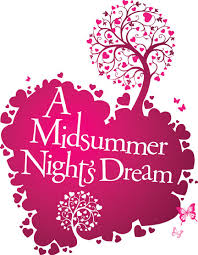This poem is the second of Shakespeare’s procreation sonnets. Continuing where Sonnet 1 left off, the speaker continues to make an attempt to convince the young man to reproduce. The transience of beauty and the continuation of blood are important themes in this sonnet too.
Sonnet 2: About the Poet
Often called England’s National Poet, William Shakespeare is widely regarded as the greatest dramatist in the English language. Also known as the Bard of Avon, his works include approximately 38 plays, including collaborations, 154 sonnets, and 2 long narrative poems, and some other verses of uncertain ownership.
Sonnet 2: Setting
Just like Shakespeare’s sonnet 1, his sonnet 2 is also a procreation sonnet in the ‘Fair Youth’ sequence. It deals, once again, with the transience of human beauty and how that transient thing can become permanent through the continuity of the species. Just like sonnet 1, this sonnet disrupts the concept of erotic courtship common to sonnets at that time. In this sonnet, the speaker continues to implore the beautiful young man to overcome his self-obsession to lead a life in isolation and procreate.
Sonnet 2: Poetic Devices
Metaphors:
Line 1-‘winters…besiege’
Line 2- ‘deep trenches….brow’ (trenches refer to wrinkles)
Line 3- ‘youth’s proud livery’
Line 4- ‘tattered weed’
Line 5- ‘treasure of thy lusty days’
Alliteration:
Line 1- ‘besiege…brow’
Line 2- ‘dig deep’
Line 7- ‘within thine’
Line 9- ‘much more’
Line 11- ‘shall sum,’ ‘make my’
Line 14- ‘warm when’
Consonance:
Line 1- letter ‘s’
Line 4- letter ‘w’
Sonnet 2: Summary
This sonnet consists of 3 quatrains and a couplet. It follows a rhyme scheme of abab cdcd efef gg.
This sonnet continues in the same vein as sonnet 1, with the speaker trying to implore the young man to procreate. But there is a slight difference in the speaker’s arguments this time. In Shakespeare’s Sonnet 2, the speaker asks the young man to imagine a time in the future when he would be old (‘forty winters’). He tells him that due to the passage of time, his beauty will be lost – his face would be lined and wrinkled, and his eyes would be sunken. People would wonder where all his beauty went away. If he would have offspring, then in such situations, he would be able to point towards his child to show the continuation of his beauty and youth. The man would himself feel invigorated in his older days by seeing his own beauty and youth before his eyes.
Sonnet 2: Analysis
Shakespeare’s Sonnet 2 deals with the transience of youth and beauty at the individual level. The speaker invokes a young man to procreate before it is too late in order to pass on his beauty to the next generation.
Quatrain 1:
The speaker is addressing a young man. The poem begins on a stark note. The speaker invokes the dispassionate nature of time and tells of a time in the future when the young man would be forty years old- ‘forty winters.’ The passage of time will attack the beauty of the young man. Hence the use of the term ‘besieged.’ The wrinkles on the man’s face, when he grows older, would be like the trenches dug by the Time’s army. The man’s youth is like an exterior garment, the speaker says. This skin-deep garment is the center of attraction now, but it will not always be this way, writes the poet. One day, in the future, the man’s looks will be like tattered weeds, worth of little value.
Quatrain 2:
When the young man grows old, he’ll be asked about his lost youth, beauty, and vigor (‘treasure of lusty days’). He would then reply that his youth and beauty lie within his old sunken eyes. The speaker asks the young man to feel shame about his self-obsession and self-love that stops him from procreating.
Quatrain 3:
The speaker says that the young man could be using his beauty for more praiseworthy purposes, such as creating offspring. If he does use his beauty for such a purpose, then in that future day, when asked ‘Where all the treasure of thy lusty days,’ he could simply point to his young and beautiful child. ‘Sum my count’ makes a reference to ‘thriftlessness’ in the third quatrain. All the praise that the young man showered on himself would now be heaped upon his child. ‘Old excuse’ refers to the saying ‘my child carries all my beauty. And that is the excuse that the young man would be able to offer once he is older, provided, of course, that he has an offspring. This would be a transfer of beauty and youth from one generation to another. The young man’s offspring would get his beauty through succession.
Final couplet:
The passing of his beauty would make the young man, in some way, immortal. Through his child, the man would be able to relieve his own youth. On days when he would feel weak of old age (‘feel’st it cold’), he could look at his offspring and be heartened by the fact that his youth and beauty have not been lost.
Sonnet 2: Central Idea
The poem is about the continuation of beauty through procreation. The speaker asks the young man to imagine a time in the future when his youth and beauty will be lost and asks him to procreate so that his youth and beauty continue to thrive through his offspring.
Sonnet 2: Tone
The speaker continues with the imploring tone from sonnet 1. However, he has a speculative tone for most of the poem, discussing future situations. He ends with a hopeful tone in the final couplet.
This sonnet is written in a reasonably direct style which makes it easy to follow, especially if one is familiar with sonnet 1. In this poem, the speaker tries to paint images of future situations. And in the process, he tries to explain to the young man how time will take a toll on his beauty. The speaker then tells the young man how an offspring can help him to pass on his beauty to future generations.
Just like sonnet 1, this poem too seems to suggest that beauty is the primary reason why the speaker is imploring the young man to procreate. This might seem regressive to many in today’s context.
Some online learning platforms provide certifications, while others are designed to simply grow your skills in your personal and professional life. Including Masterclass and Coursera, here are our recommendations for the best online learning platforms you can sign up for today.
The 7 Best Online Learning Platforms of 2022
- Best Overall: Coursera
- Best for Niche Topics: Udemy
- Best for Creative Fields: Skillshare
- Best for Celebrity Lessons: MasterClass
- Best for STEM: EdX
- Best for Career Building: Udacity
- Best for Data Learning: Pluralsight












